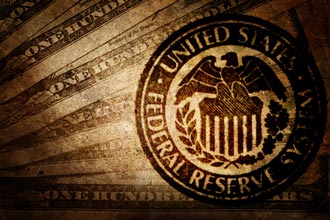Pundits of every stripe thought the U.S. Federal Reserve was out of ammunition to keep the economy afloat while the world battles the coronavirus.
However, over this past weekend, the Fed pulled out all the stops. The Fed launched everything from zero-percent interest rates and a trillion dollars in support to money markets to "QE Infinity" to $300 billion in direct lending programs for businesses. All that's left to throw at the economy is the kitchen sink.

Wall Street liked what it saw. At first. Stocks bounced up on the news before sinking into the red by yesterday's close. But there's an even bigger problem.
The problem is that once the economy gets back on track, all that liquidity sloshing around is going to be competing for a home, whether it be in catch-up manufacturing, worker hiring, or capital investment. And if you believe what you learned in economics class, that is going to stoke the flames of inflation.
This does not even take into account the multitrillion-dollar stimulus plans now battling for congressional approval. All told, that's over $4 trillion in liquidity in a $19 trillion economy, based on 2019 GDP.
This is a dizzying amount of money being thrown around as this crisis has taken a toll on the stock market and economy.
But we're skeptical.
This cash might save the economy from going under now but cripple it later.
Money Morning Capital Wave Strategist Shah Gilani argues this is going to lead to inflation that the Fed won't be able to control and will be the cause of some big financial problems later.
The Good, the Bad, and the Ugly: Shah's Coronavirus Roadmap Shows You What Comes Next
Unlike most government officials, the Fed does not have to run its ideas through Congress. There is no debate between Republicans and Democrats because the Fed can essentially print as much money as it wants to fight whatever threat it sees.
And the Fed has made it very clear that it will keep doing whatever it takes to "save" the economy.
Here's what we could be looking at...
2008 Redux - on Steroids
[mmpazkzone name="in-story" network="9794" site="307044" id="137008" type="4"]
We've been through a similar set of actions before as the government rallied together to "fix" the financial crisis of 2008. It bailed out big banks. It put together a $700 billion package to buy toxic assets created by Wall Street that had blown up themselves and their creators. The government took over General Motors Co. (NYSE: GM). Congress passed the Recovery Act that provided $787 billion to essentially replace private sector spending and keep the economy from crashing.
And the Fed took interest rates down to zero and kept them there for years.
Pundits thought that all of that money would spark inflation and kill the U.S. dollar. That, in turn, would push gold to $3,000 or $5,000 per ounce.
Of course, that didn't happen. With such low interest rates and an economy that was growing at a very modest pace, gold did not explode higher.
But look at the 2008 numbers compared to today. They pale in comparison to what the Fed is already doing and Congress is trying to do right now. It's almost an impossibility that when the virus threat is contained and people go back to work that all of that liquidity won't spark inflation.
Think about the business that will not recover from the current economic lockdown. Think about supply chains that are broken and infrastructure that may no longer be needed. The Fed and Congress cannot offset that with cash.
As Shah put it, the Fed's bazooka won't work to stimulate the economy this time.
But it will make things worse.
This time, as goods and services become scarce on account of greatly reduced manufacturing and production, including in mining, agriculture, farming, and livestock production, prices are going to start rising. That will be followed by increases in real interest rates.
It will start a chain of events affecting companies who no longer can count on cheap money for financing.
But we will survive.
Remember, we've had big inflation before, and we survived. The key is to recognize that what worked from an investment point of view is probably not going to work going forward.
That means investing in a 0% interest rate world will have to give way to investing in a higher interest rate world. And that, in turn, means adding real assets to your portfolio.
It does not mean selling all your stocks, especially not now, after they've fallen in value. The economy will eventually come back, and so will the stock market.
But it probably would be a good idea to add a little bit of gold to your holdings just to be safe when inflation makes its unwelcome return.
Of course, that's just one possible scenario coming out of this crisis.
If you haven't already, make sure you check out our complete roadmap of what the coronavirus crisis means for your money and what you can do about it. It's completely free for our readers...


